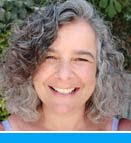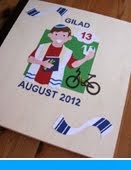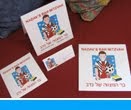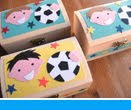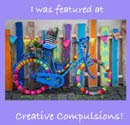The day after our hike in
Ein Avdat we took ourselves off to Avdat National Park. Ein Avdat and Avdat National Parks are located close to each other in the Negev desert. Ein Avdat National Park offers a hike in the desert canyons, while in Avdat National Park you can see the remains of a Nabatean city.
Avdat, also known as Abdah, Ovdat and Obodat, was a city on the
Incense route, the route by which incense, perfumes and spices were brought from Arabia through the Negev and to the port of Gaza. Like Mamshit it was inhabited by the
Nabateans,
Romans and
Byzantines between the 1st century BCE and the 7th century CE. The city was named for the Nabatean King Oboda II (1st century BCE) who developed the city; he was revered as a god, and was buried in the city. Avdat was destroyed by an earthquake in 630 CE, and shortly after, in 636 CE, the area was conquered by Arab tribes. These two factors together sealed its fate and the city was abandoned. Modern archaeological study of the city began in the 19th century, and in 1870 a researcher by the name of Palmer identified the site and determined that it was the city of Avdat. Excavations began in 1958.
Avdat was declared a
World Heritage Site by
UNESCO in June 2005 but on 4th October 2009 the site suffered extensive damage when hundreds of artifacts were smashed and paint smeared on walls and an ancient wine press. In a lengthy rehabilitation project, the damaged artifacts were restored and the security arrangements at the site were reinforced. Avdat was also the filming location of the 1973 film
Jesus Christ Superstar.
We started our visit to Avdat at the entrance to the national park. There we found an information centre with displays about the Incense route, antiquities from the site and a short film about the Incense route and how the Nabateans water harvested to survive in the desert.
We left the museum and drove to the upper parking, stopping en route to explore the store caves in the lower city, above. The caves were used as tombs during the period of the Nabatean settlement, while the Byzantines used them for dwellings, stables and monasteries, as well as for storing agricultural produce and fermenting wine.
At the top of the hill is the main city of Avdat. At the entrance to the city is a Roman tower with an inscription dating back to the late 3rd century; the Roman tower was built by a local Nabatean architect who was so skilled that the lower story and roof survived the 630 CE earthquake. This tower is the oldest Nabatean building found in Israel.
From the tower we continued on to the street in the Byzantine quarter. The main street had homes on each side; it was destroyed in the earthquake but the arches of the "vaulted room" were reconstructed during the conservation project after vandals tore them down in 2009. The drainage system collected rainwater from under the streets and drained it into cisterns.
A huge Roman army camp was well preserved, as was the Byzantine wine press, with its crushing floor and the large collection hole in a second room. It was part of a Late Roman/Early Byzantine farmhouse. The Byzantine citadel with its tower, large water cistern and channel through which rainwater flowed, is also well preserved. The view from the tower was spectacular!
The remains of an old Nabatean temple is located in a large hall, which is flanked by two churches. The Southern church was part of a monastery, named after
Saint Theodore, a Greek
martyr of the 4th century. The Northern church is the older church, which was built from the stones of an earlier pagan temple.




Returning to our car we drove back down the hill, stopping first at the remains of a Roman villa which was built alone, overlooking the agricultural land and the Zin Valley. The villa is built around a square central courtyard with a water cistern in the centre. We then made another stop further down the hill at a burial cave which dates from the 3rd century CE. It contains 20 hewn burial niches and engravings of the sun and moon. The burial cave is thought to be a shrine to
Aphrodite.
Finally we went to see the bathhouse at the bottom of the hill, which was built in the 4th century by Roman soldiers. Though it was locked and we were unable to go in, we learnt that it had two hot rooms, a cool room, a warm room, and a dressing room. An adjacent well, 70 metres deep, contained water that flowed through a channel to the bathhouse.
Avdat is one of the best preserved Nabatean cities in Israel. It was a great place to learn about the Nabateans, and the Romans and then Byzantines who inhabited this spot. The reconstructed rooms, churches and temple were impressive, but it was the gorgeous views from the top of the hill that left the biggest impression. Exploring this site is a must for anyone trying to grasp the history of the Negev desert and its people.
* This post has been shared on
Travel Tuesday,
Wordless Wednesday (on Tuesday),
Wednesday around the World,
Little Things Thursday,
Thankful Thursday,
Friday Foto Friends and
All Seasons.


















































